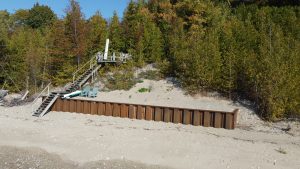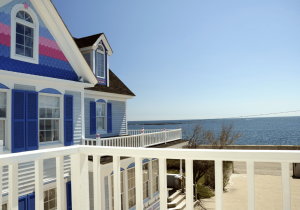If you’re considering constructing a waterfront property, then one of the most important components to take into account is the shoring wall. Shoring walls are built along coastlines and waterfronts to protect against floodwaters, erosion, and other damage from occurring during natural disasters or high tide events. However, there are many questions that come up when it comes to building these structures – what type of material should be used? How much will it cost? Is there a permit process in place? In this post, we’ll answer all of your common FAQs about shoring walls so that you can build the home of your dreams!
What is a waterfront shoring wall

Waterfront shoring walls are vertical structures built along a body of water such as a lake, river, or ocean. The purpose of these walls is to contain the natural elements, like soil and sediment, from eroding away from the area and maintain stability for buildings or homes located in these areas. They also help protect vital infrastructure, such as bridges and docks, from being damaged by water currents and large vessels floating around them. Aside from providing stabilization, waterfront shoring walls create space for recreational activities like fishing and boating that otherwise wouldn’t be possible in places surrounding bodies of water. This makes them an essential element throughout cities and towns around the Great Lakes and other properties around the world near water.
What materials are used for waterfront shoring walls
Waterfront shoring walls are increasingly common as a form of stabilization along shorelines and can consist of a variety of materials. These materials are carefully chosen for their long-term durability and resistance to the elements. An example is timber piling, which is often used when constructing docks, piers, and bulkheads. Other important materials include sandstone or limestone blocks, steel sheet piling and driven piles. All these materials have different characteristics that make them well suited for waterfront shoring applications – from flexibility to load bearing abilities – providing an effective form of stabilization. However, proper maintenance is important to ensure that the wall remains durable over time as they can be subject to weathering due changing temperatures and damage caused by coastal storms.
Are there any regulations or permits that need to be obtained
 Before taking on the task of building a waterfront shoring wall, it is important to understand that the project may require certain regulations and permits for construction. Depending on the location, these requirements are dictated by local, city or town governments. In addition, care must be taken when dealing with protected wetlands or land, as specific permits from both state and federal agencies may be needed before starting the project. Understanding what documents and/or permits will be necessary can save time and provide peace of mind. Take the time to thoroughly check with local government officials to make sure everything is in order before beginning any construction projects along a waterfront.
Before taking on the task of building a waterfront shoring wall, it is important to understand that the project may require certain regulations and permits for construction. Depending on the location, these requirements are dictated by local, city or town governments. In addition, care must be taken when dealing with protected wetlands or land, as specific permits from both state and federal agencies may be needed before starting the project. Understanding what documents and/or permits will be necessary can save time and provide peace of mind. Take the time to thoroughly check with local government officials to make sure everything is in order before beginning any construction projects along a waterfront.